Tomorrow marks the 80th anniversary of the liberation of Auschwitz-Birkenau, the German-Nazi concentration and death camp where more than 1.1 million people were murdered between 1940 and 1945, about 85% of whom were Jews.
Other victims included Poles, Soviet prisoners of war, Roma and Sinti gypsies, and other ethnic groups.
The date of the camp's liberation by the Soviet army on 27 January 1945 is observed annually as International Holocaust Remembrance Day.
There were many other Nazi death camps built across German-occupied Poland during World War II such as Treblinka, Sobibor, Majdanek and Chelmno.
These were places where the Nazis' racist theories against Jews and other ethnic groups were put into practice on a vast industrial scale, planned in callous and methodical detail.
But Auschwitz was the largest of the death camps.
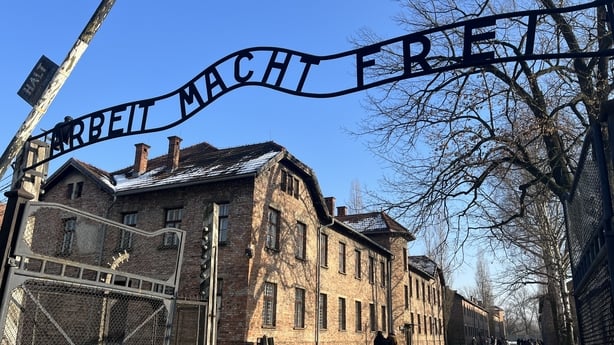
Where is Auschwitz and when was it built?
After Germany invaded Poland in 1939, they annexed western Poland into the Third Reich.
One of the hundreds of Polish towns annexed was Oświęcim in southwestern Poland, which had existed for centuries. Today, the town is home to around 35,000 inhabitants.
German authorities renamed the town Auschwitz - a Germanisation of the Polish town name.
In the eyes of the Nazis, this was a place where they could send people, who they deemed as undesirable, en masse to their deaths.
"Constantly throughout the German policy of genocide, the idea was to locate your targeted population, be it inmates or Jews in general, close to the railway tracks," Professor Jan Grabowski, a prominent Polish historian of the Holocaust said.
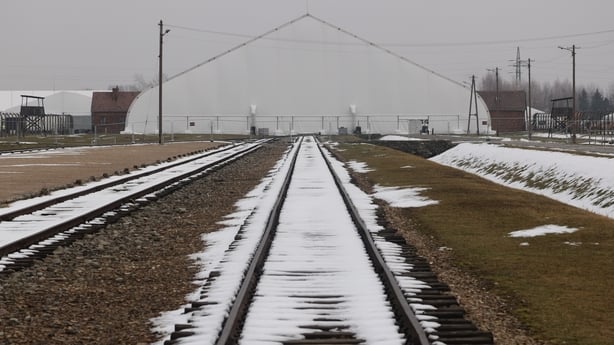
"They were looking for a place which was well reachable by rail from various connections and it was sort of a hub," said Prof Grabowski, who lectures at the University of Ottawa.
Even today, more than a dozen rail lines run through the train station in Oświęcim – the convergence of so many tracks resembles that of a major station in London or Paris rather than a medium-sized town.
Starting in 1940, the Nazis built a concentration camp in the town’s outskirts, first to imprison and kill Polish political prisoners and intelligentsia. They named the camp 'Konzentrationslager Auschwitz’.
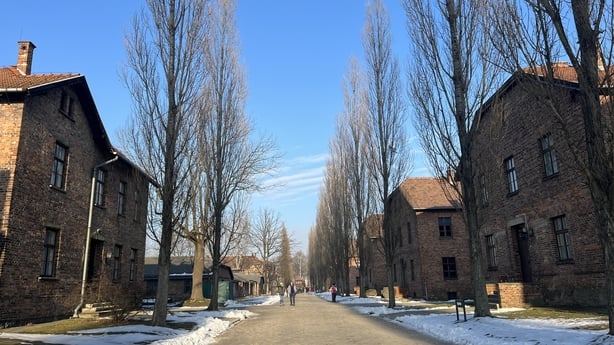
In late 1941, the construction of Auschwitz II-Birkenau began, a second camp complex about 3km from Auschwitz I, the original camp.
That's a key point about Auschwitz. It was not just one camp.
The entire complex was comprised of three camps: Auschwitz I, Auschwitz II-Birkenau and Auschwitz III-Monowitz.
Initially, Auschwitz II-Birkenau was built to house Soviet prisoners of war who were used as slave labour.
But, by early 1942, the Nazis had started using this second site to murder Europe’s Jews on an industrial scale.
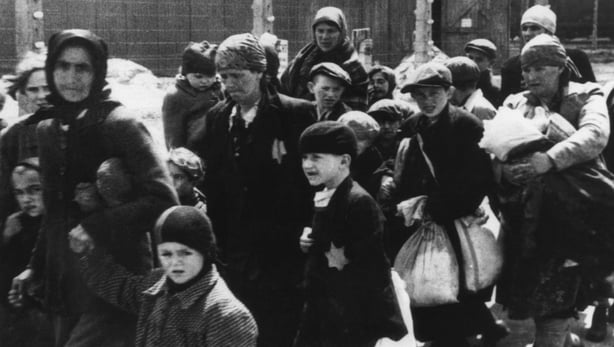
In addition to the three main camps, there were almost 50 smaller, sub-camps around Auschwitz that operated between 1942 and 1945.
As you walk around today’s museum and memorial at the former death camp, it is hard not to be struck by the vastness of the complex. This was an enormous operation, planned meticulously.
How was the mass murder organised?
Transported by train from across German-occupied Europe, those that arrived in Auschwitz faced almost certain death.
German SS guards – there were more than 5,000 of them stationed at Auschwitz – selected new arrivals for the gas chambers or camp labour. Most Jews were sent immediately to the gas chambers.
Those who were not killed upon arrival had to come to terms with knowing that most or all their family members had just been killed. They then faced a regime of hard labour, starvation and brutal beatings meted out by the camp’s guards.
At first, two temporary gas chambers were built in old farmhouses after German authorities had expelled the local Polish farmers from the area. The Nazis settled on using Zyklon-B, a cyanide gas, as the murder weapon after early experiments on groups of Polish and Soviet inmates.
By the middle of 1942, the Germans had built four large gas chambers and crematoria at Auschwitz II-Birkenau.
Up to 2,000 people, naked after being stripped of their clothes, were squeezed into each chamber - some were built underground and disguised as showers. The Nazis maintained a pretence even up to the point of murder.
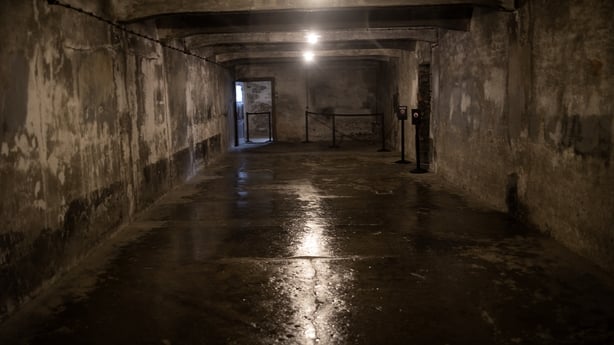
SS guards, wearing gas masks, would then drop Zyklon-B pellets in through the roof or holes in the wall, killing men, women and children, the elderly and young alike. The process of death took up to 20 minutes and would have been excruciating.
An estimated 232,000 children were sent to Auschwitz with their families. Most were murdered in the gas chambers.
After people were gassed to death, groups of prisoners called 'Sonderkommando' carried away the bodies and cut off people's hair, and removed gold teeth and jewellery before burning the bodies in furnaces and large pits.
Nazi doctors also conducted sinister experiments on inmates, particularly on women and young children, in so-called medical blocks.
Many endured horrific pain before they died. Those that survived suffered lifelong pain and illness as a result of these experiments.
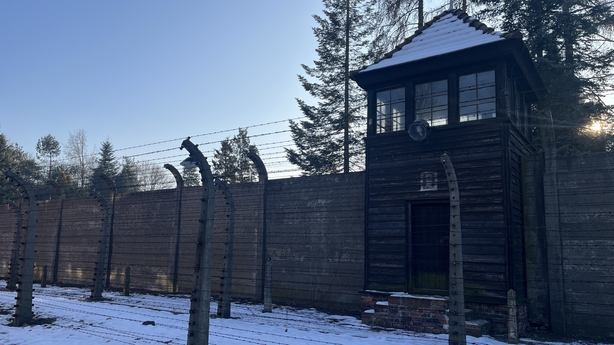
Inmates at Auschwitz who resisted in any way were summarily executed by being shot, hung, starved or sent to the gas chamber.
Mass killing in the gas chambers went on until late 1944 by which time the Soviet Red Army was advancing through eastern Poland and pushing German forces westward.
With the Western Allies fighting through France and the Soviets moving closer to Germany from the east, the Nazi high-command sensed that the tide of war was turning.
In an attempt to hide their crimes, the SS started to destroy evidence of their mass murder, burning prisoner registrations and transportation records.
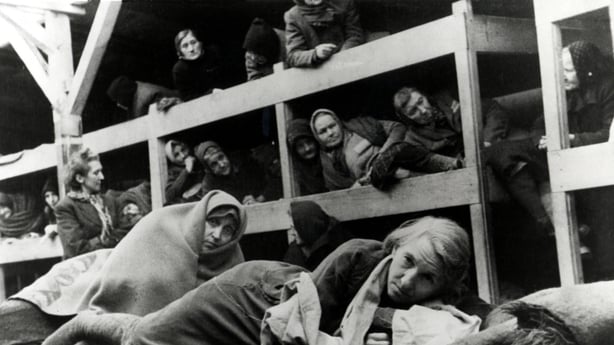
Over a five-month period, starting in August 1944, more than 100,000 of the inmates were transferred to Germany to be used for slave labour.
Forced to walk great distances, many died of exhaustion and starvation, or were summarily shot on the spot by the SS if they were too weak to continue on these death marches.
Just a week before Soviet forces liberated the camp, in January 1945, the SS began blowing up the gas chambers and crematoria. They detonated the last gas chamber just one day before the Red Army arrived.
The Soviet soldiers who liberated the camp found about 7,000 starving inmates remaining.
Today at Auschwitz I, you can still visit Crematorium I, a grim, one storey concrete structure where people were gassed and their bodies burned.
What happened to the perpetrators?
The vast majority of SS guards and camp employees who worked at Auschwitz were never brought to justice.
Many of them lived long and quiet lives back in their home cities and towns in the former West Germany, Austria and other countries allied to the Nazi regime during the war.
Poland's Communist government tried about 1,000 former SS camp guards after extraditing them from western Germany just after the war ended.
They charged about 650 of them. Most low-ranking guards received short sentences of three years in jail.
A small number of senior camp officers and doctors were sentenced to death by American, British and French military courts in their zones of occupation in post-war Germany.
However, West German authorities only started to investigate the role of former camp guards in 1958, culminating in the Frankfurt Trials.
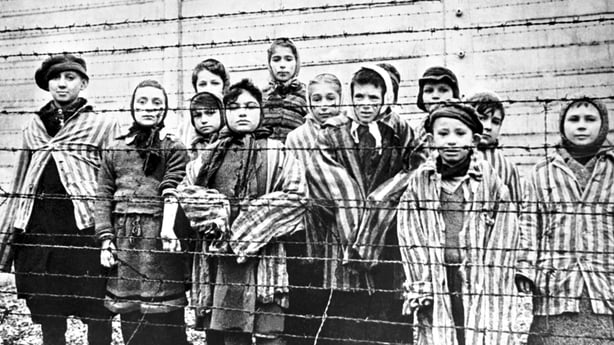
Between 1963 and 1965, 22 former SS Auschwitz officers were tried for crimes of mass murder. Six were given life sentences while the rest received short sentences.
The man who oversaw the killing at Auschwitz, camp commandant Rudolf Hoss, was tried by Polish authorities and hung at Auschwitz in 1947.
His former house, separated from the camp only by a high wall and where he and his wife raised their children, is soon to become a centre for research on anti-semitism and extremism.
A New York-based charity, the Counter Extremism Project, bought the house recently and will run the project.
Will survivors of Auschwitz attend tomorrow's commemoration?
Twenty years ago, 2,000 survivors of Auschwitz attended the 60th anniversary of the liberation.
Tomorrow, about 50 Auschwitz survivors from around the world will attend the ceremony. Their numbers are dwindling with the youngest survivors now in their late 80s. The eldest are in their late 90s.
Some will travel from the US, a huge undertaking for someone of that age.

Heads of state and government leaders, including Taoiseach Micheál Martin and Britain's King Charles III, will attend the commemoration and light candles to remember the six million Jewish victims of the Holocaust and other victims killed at Auschwitz.
But world leaders won't deliver speeches. Instead, the survivors will address the world and recount what they saw and endured at the camp.
This week when I visited Auschwitz, the temperature was zero degrees. It felt freezing even though I, like all the other visitors, was wrapped up in a warm winter jacket, scarf, hat and gloves. My mind turned to what it must have been like for the camp's inmates who had to wear thin pyjamas and do back-breaking work in the cold.
Museum officials admit that tomorrow's 80th anniversary commemoration may well be the last big event where a sizeable number of survivors will attend in person.
Read more:
How the world discovered the Nazi death camps
How the Nazis carried out their 'Final Solution'
Holocaust generation a narrowing 'bridge' to past horrors
The challenge of teaching the history of Nazi crimes at Auschwitz and the Holocaust will become harder for curators and historians without living survivors.
At the Auschwitz-Birkenau Memorial and Museum, curators have embraced social media, podcasts and online classes to reach and teach wider audiences about Auschwitz in anticipation of the day when the last living survivor passes away.
Last year, more than 1.8 million people visited the site of the former death camp to learn about what happened there.
"I am optimistic about the Holocaust," Chief Rabbi of Poland Michael Schudrich said last week when I met him at the Nożyk synagogue in Warsaw.
"Meaning, I'm optimistic that people are remembering and I'm optimistic that actually people can learn the lesson."
He will lead Jewish prayers at tomorrow's commemoration.
Go to Auschwitz-Birkenau, not just to understand how it happened. Go there to make sure it never happens again.






